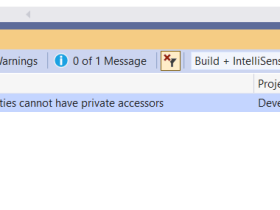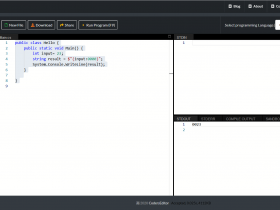C# Tips & Tricks #34 – “default” keyword
c#This blog post will explain what is the default keyword in C# and the usecase of the default keyword in C#.
The “Default” keyword in c# can be used in the following scenarios .
The main use of default comes in to picture when used in the generic code.
What is the use of “default” keyword in C# ?
1. To return Type’s Default Value
The Default returns the type’s default value.
For the Integer , it returns 0 , for Boolean , it returns false and for the reference types , it returns null
int valueI = default(Int32); bool ValueB = default(Boolean); string senthil = default(String); MessageBox.Show(valueI.ToString()) ;// "0" MessageBox.Show(ValueB.ToString()); // "False" MessageBox.Show(senthil); // nothings
There is another way to get the default value via the following example.
int ValueI = new int();
Here ValueI will be 0 .
2. The keyword default is used within the switch case block to take the default value if nothing is found .
int i =0 ;
switch (i)
{
case 1 :
MessageBox.Show("1");
break;
case 2 :
MessageBox.Show("2");
break;
case 3:
MessageBox.Show("3");
break;
default:
MessageBox.Show("Default");
}
3. To know , if the type is a Reference or Value type
if (default(T) == null)
MessageBox.Show("Reference Type");
else
MessageBox.Show("Value Type");




#3: The System.Type class does have an IsValueType property, so instead of doing this, a better solution would be:
if (typeof(T).IsValueType)
Hey Joe ,
Thanks for the info …
And in addition the third example is wrong. For instance, ‘int?’ is value type (because Nullable is struct), but ‘default(int?)’ will be equal to ‘null’ due to equality comparers in Nullable
I’ve always thought Nullable was a little strange. I’m sure there’s a good reason for it being a value type, but from what I’ve used of it, it would make a lot more sense if it was a class.